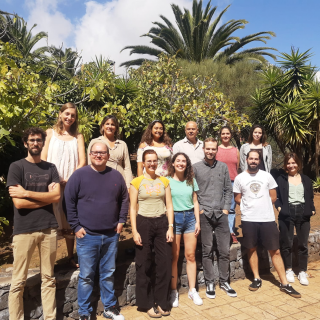Bibcode
Yan, Renbin; Chen, Yanping; Lazarz, Daniel; Bizyaev, Dmitry; Maraston, Claudia; Stringfellow, Guy S.; McCarthy, Kyle; Meneses-Goytia, Sofia; Law, David R.; Thomas, Daniel; Falcon Barroso, Jesus; Sánchez-Gallego, José R.; Schlafly, Edward; Zheng, Zheng; Argudo-Fernández, Maria; Beaton, Rachael L.; Beers, Timothy C.; Bershady, Matthew; Blanton, Michael R.; Brownstein, Joel; Bundy, Kevin; Chambers, Kenneth C.; Cherinka, Brian; De Lee, Nathan; Drory, Niv; Galbany, Lluís; Holtzman, Jon; Imig, Julie; Kaiser, Nick; Kinemuchi, Karen; Liu, Chao; Luo, A. -Li; Magnier, Eugene; Majewski, Steven; Nair, Preethi; Oravetz, Audrey; Oravetz, Daniel; Pan, Kaike; Sobeck, Jennifer; Stassun, Keivan; Talbot, Michael; Tremonti, Christy; Waters, Christopher; Weijmans, Anne-Marie; Wilhelm, Ronald; Zasowski, Gail; Zhao, Gang; Zhao, Yong-Heng
Referencia bibliográfica
The Astrophysical Journal
Fecha de publicación:
10
2019
Revista
Número de citas
121
Número de citas referidas
112
Descripción
We present the first release of the MaNGA Stellar Library (MaStar), which is a large, well-calibrated, high-quality empirical library covering the wavelength range 3622-10354 Å at a resolving power of R ̃ 1800. The spectra were obtained using the same instrument as used by the Mapping Nearby Galaxies at Apache Point Observatory (MaNGA) project, by piggybacking on the Sloan Digital Sky Survey (SDSS-IV)/Apache Point Observatory Galaxy Evolution Experiment 2-N (APOGEE-2N) observations. Compared to previous empirical libraries, the MaStar library will have a higher number of stars and a more comprehensive stellar-parameter coverage, especially of cool dwarfs, low-metallicity stars, and stars with different [α/Fe], achieved by a sophisticated target-selection strategy that takes advantage of stellar-parameter catalogs from the literature. This empirical library will provide a new basis for stellar-population synthesis and is particularly well suited for stellar-population analysis of MaNGA galaxies. The first version of the library contains 8646 high-quality per-visit spectra for 3321 unique stars. Compared to photometry, the relative flux calibration of the library is accurate to 3.9% in g - r, 2.7% in r - i, and 2.2% in i - z. The data are released as part of SDSS Data Release 15. We expect the final release of the library to contain more than 10,000 stars.
Proyectos relacionados

Huellas de la Formación de las Galaxias: Poblaciones estelares, Dinámica y Morfología
Bienvenida a la página web del g rupo de investigación Traces of Galaxy Formation. Somos un grupo de investigación amplio, diverso y muy activo cuyo objetivo principal es entender la formación de galaxias en el Universo de una manera lo más completa posible. Con el estudio detellado de las poblaciones estelares como bandera, estamos constantemente
Anna
Ferré Mateu